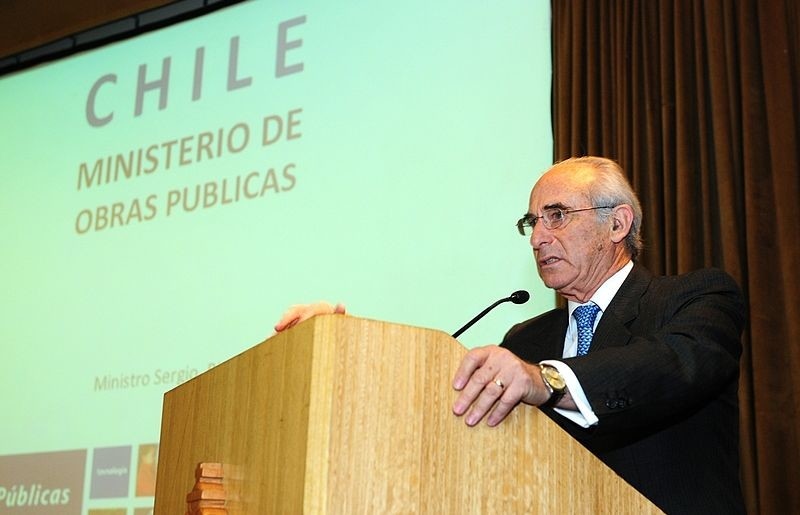Latin America & the US: Looking Towards 2020
The ongoing and unprecedented speed of global change demands a new responsibility from Latin American countries.
On March 28, 2014, Dialogue Senior Fellow Sergio Bitar spoke at an event hosted by the Centro Nacional de Planeamiento Estrategico (CEPLAN) in Lima, Peru. Entitled “Forum of the Future: Sharing Ideas to Construct Our Future,” the event featured speakers from many Latin American nations, as well as the United States, exploring why and how strategic foresight planning in Latin America today can help create better policies for the region in the future.
Carlos Anderson, the president of CEPLAN, introduced the goals of the conference. He spoke of the need for all organizations and groups to think about both where we are going and how are we going to arrive. He sees the idea of strategic planning as a modernization in the way we conduct work today. Strategic foresight would help Latin America act with more urgency, prepare, prevent, and not suffer, but rather possibly benefit, from future changes.
The morning included speakers who dug into Anderson’s comments, exploring why, how, and where Latin America needs strategic foresight. Bitar discussed his report “Why and How Latin America Should Think About the Future.” He looked at six areas that are important to Latin America’s growth and success in the future, including: disruptive technologies, natural resources (water and energy), changing demographics, cities, climate change, and citizen empowerment. He explored how these are intertwined with international trends such as middle class growth, population growth, trust in government, education in Latin American countries, and the growth of Asia, among others.
Considering some of these trends, Roberto Garcia, of the Inter-American Development Bank, reviewed specifically where Latin America is now, where it is falling behind, and how looking towards the future can influence its current path. He saw Latin America as falling behind in productivity, infrastructure, labor markets, and internal savings. Smart, inclusive planning in these areas, and the prioritizing of goals and actions, would be a way to overcome these deficits and advance the region.
So how does one begin to answer the questions of Garcia and Bitar? Barry Hughes, from the Pardee Center for International Futures at the University of Denver, introduced a forecasting tool that uses data analysis as a way to determine “where do we want to go.” For both countries and regions, this tool produces graphs that show trends up to hundreds of years in the future. By allowing users to “see” the future and the trends that lead to it, a collective vision can be developed of goals and plans that would improve what lies ahead.
The afternoon presentations explored fundamental elements of how governments can begin to implement strategic foresight planning. Javier Medina Vasquez, of the Universidad del Valle in Colombia, reviewed the technicalities of planning for the future. He noted that prospective work is a basic function of planning, along with coordination and evaluation. There are more and less effective ways governments and groups can organize planning so that it includes prospective thinking and is productive and action oriented.
Lelio Fellows, of the Centro de Gestao e Estudo Estrategicos (CGEE), cited Brazilan examples of prospective studies in government. A particular strategy he highlighted was the use of outside specialists to make roadmaps and hypothesize about what may happen in the future. This creates an objective vision of trends and allows those involved to act. Objective investigation is a good tool for future studies.
Finally, Eduardo Balbi, from the Red de Escenarios y Estrategia, spoke about what prospective studies can do and how they can be used to take proactive steps and prevent negative developments. One particular example he cited was taking prospective steps to prevent conflicts. But being prospective rather than reactive involves not only a perspective change, but also cultural and structural changes. Being prospective takes far more coordination than being reactive–the type of coordination that Fellows had used as an example of success. We need to focus on a new type of intelligence and action in order to make the changes that the conference showed we need.
Overall the event gave a comprehensive outlook on why using strategic foresight is important, specific areas in which it is needed in Latin America, and what tools can be used to achieve it. CEPLAN’s advancement of these topics presented the many challenges that face Latin America in this area, but also presented new tools that can help to address them.
The ongoing and unprecedented speed of global change demands a new responsibility from Latin American countries.
The future of Latin America will be directly affected by its responses to changing global trends today.
The second newsletter of the Dialogue’s Global Trends and Latin America’s Future Initiative identifies key challenges and opportunities for Latin America and discusses the relationship between global trends and education policy.
 Rec79-Flickr / CC BY 2.0
Rec79-Flickr / CC BY 2.0
 Video
Video
